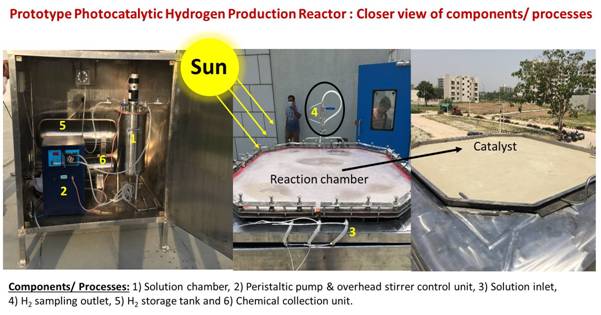Team L&M
For the first time, a team of scientists have developed a large-scale reactor which produces a substantial amount of hydrogen using sustainable sources like sunlight and water, which is a cost-effective and sustainable process.
This feat has been achieved by Dr Kamalakannan Kailasam and his team, including Prof Ashok K Ganguli, Dr Vivek Bagchi, Dr Sanyasinaidu Boddu, Dr Prakash PN & Dr Menaka Jha from the Institute of Nano Science and Technology (INST), Mohali, an autonomous institute of the Department of Science & Technology (DST), Govt. of India.
The team has developed a prototype reactor which operates under natural sunlight to produce hydrogen at a larger scale (around 6.1litres in eight hours) using carbon nitrides (present in earth in abundance).
Producing hydrogen at a large scale through the photocatalytic water splitting is the long-term persistent solution for the growing renewable energy needs and a low-cost economic process which will benefit society in the longer term. The team is in the process of obtaining a patent for the technology.
Researchers all over the world are working towards renewable energy solutions which should be sustainable with a limited carbon footprint. “The energy crisis and the ever-threatening climate crisis urged us to work on this technique. The stability and chemical flexibility of having different organic groups in carbon nitrides triggered us to work on these cost-effective organic semiconductor materials for sustainable hydrogen production,” says Dr Kamalakannan.
Hydrogen generated in this manner can be used in many forms like electricity generation through fuel cells in remote tribal areas, hydrogen stoves, and powering small gadgets, to mention a few. Eventually, they can power the transformers and e-vehicles, which are long-term research goals under progress.
